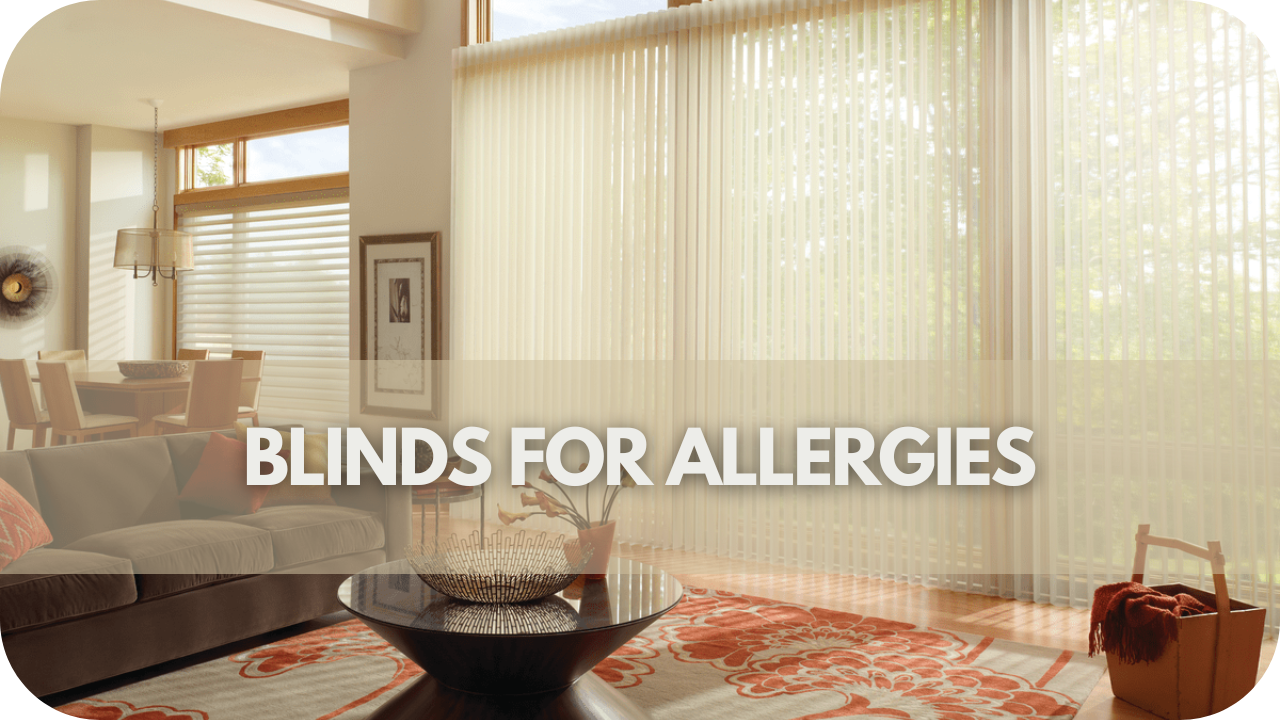When I noticed my allergies flaring up, I realised my home’s window treatments might contribute to the problem. Dust, pet dander, and pollen can settle on traditional blinds and curtains, making them a breeding ground for allergens.
I decided to explore hypoallergenic blinds that would help reduce allergens while still maintaining style and comfort.
After learning about various materials and designs, you should discover great options to transform your home into a healthier, allergy-friendly environment. Here’s what you should do and how to make healthier choices!
Why Window Coverings Matter for Allergy Sufferers
Did you know your window coverings can be a hidden source of allergens? Dust, pet dander, and pollen quickly settle on blinds and curtains, making them a breeding ground for allergens. For those who suffer from allergies, this can increase symptoms such as sneezing, itchy eyes, and breathing difficulties.
Not only do certain materials trap dust, but the structure of your blinds also plays a role. Heavy fabrics like curtains can hold more allergens, while lightweight, easy-to-clean blinds provide a healthier option. By choosing hypoallergenic blinds, you reduce the number of allergens trapped inside your home, helping to improve indoor air quality.
Are your blinds easy to clean? This question is crucial for allergy sufferers, as regular maintenance is key. Hypoallergenic materials make wiping away dust easier and keep your environment allergen-free.
In some cases, even the position of your blinds can matter—horizontal slats may collect more dust than vertical ones, which tend to shed particles more efficiently. A carefully chosen blind material can significantly reduce allergens, making your home healthier for you and your family.
Hypoallergenic Blinds Materials to Consider
When managing indoor allergies, the materials you choose for your blinds can significantly impact your home’s air quality. Opting for hypoallergenic blinds can reduce the build-up of dust, pollen, and other allergens, helping to create a healthier living environment. You can enjoy stylish window coverings that are easy to clean and maintain with suitable materials.
Below are some of the top hypoallergenic blind materials to consider;
1. Aluminium Blinds

Aluminium blinds are a standout choice for allergy sufferers. The non-porous nature of aluminium means dust, pollen, and other allergens have difficulty adhering to the surface. This makes aluminium blinds incredibly easy to clean, requiring only a quick wipe with a damp cloth or a duster.
Additionally, aluminium is resistant to moisture and mould, two common allergy triggers. These durable, lightweight blinds make them an excellent long-term investment for maintaining a hypoallergenic environment.
2. Faux Wood Blinds
Faux wood blinds are not only aesthetically pleasing but also an allergy-friendly option. Unlike natural wood, faux wood doesn’t absorb moisture, preventing the growth of mould and mildew.
The smooth surface in faux timber also means dust particles have less grip, reducing allergen build-up. Faux wood is also more durable and warp-resistant, making it ideal for humid environments like kitchens and bathrooms.
With a simple wipe-down, these blinds stay clean and allergen-free, offering a low-maintenance solution for a healthier home.
3. Roller Blinds with Dust-Resistant Fabrics
Roller blinds made with dust-resistant fabrics are designed to keep allergens at bay. These fabrics are treated with special coatings that repel dust and other airborne particles. Roller blinds are an excellent choice for allergy-prone households, as they are easy to clean and maintain.
Their minimalist design also means fewer crevices where dust can settle. These blinds reduce allergen build-up and provide a sleek, modern look to any room.
4. Vertical Blinds

Vertical blinds are another hypoallergenic option to consider. Due to their vertical slats, these blinds naturally shed dust more easily than horizontal blinds, which tend to collect dust on flat surfaces. The design allows for better air circulation and reduces the chance of allergens settling.
Additionally, vertical blinds come in various hypoallergenic materials, such as PVC and treated fabrics, which further prevent the accumulation of dust and allergens. Their practicality and easy maintenance make vertical blinds a top choice for allergy sufferers.
Additional Features of Allergy-Friendly Blinds
Beyond hypoallergenic materials, allergy-friendly blinds often boast additional features for enhanced comfort. For instance, anti-dust coatings are a common feature which prevents allergens from settling on the blinds’ surfaces. Wouldn’t it be beneficial if your blinds could actively reduce dust accumulation?
Many models also have easy-to-clean mechanisms, simplifying maintenance and ensuring your environment remains allergen-free. In some cases, blinds are treated with antimicrobial agents, which inhibit mould and bacteria growth.
Imagine the peace of mind knowing your blinds are protecting your health. Furthermore, UV-resistant properties help prevent the degradation of materials that could otherwise contribute to poor indoor air quality.
Designed with functionality and hygiene in mind, these blinds offer more than just visual appeal. Choosing blinds with these features ensures a healthier, more manageable living space.
Maintenance Tips for Allergy-Friendly Blinds

Regular upkeep is vital to keeping your allergy-friendly blinds performing at their best. Follow these maintenance tips to ensure they stay effective and continue to support a healthier home environment:
- Regular Dusting: Use a microfibre cloth or a vacuum with a brush attachment to remove dust and allergens.
- Choose Safe Cleaners: Opt for gentle, hypoallergenic cleaning solutions to avoid introducing irritants.
- Periodic Deep Cleaning: Some blinds can be washed or wiped with a damp cloth; consult manufacturer guidelines.
- Professional Cleaning: Consider professional cleaning services for delicate blinds to ensure thorough care.
- Prevent Mould Growth: Keep blinds away from high-humidity areas to avoid mould and bacteria.
- Dry Thoroughly: Ensure blinds are completely dry before reinstallation to prevent damp conditions that can foster allergens.
Conclusion
Choosing the right hypoallergenic blinds is a crucial step towards a healthier home. Investing in and maintaining allergy-friendly materials can significantly reduce allergens and enhance indoor air quality.
Ready to transform your living space? Discover the perfect solution at Into Blinds and breathe easier tomorrow.



